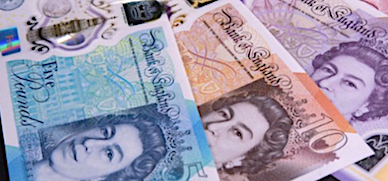UK government borrowing was £144.6 billion in the financial year ending (FYE) March 2022, revised down by £7.2 billion from last month’s first provisional estimate, but remaining the third-highest financial year (FY) borrowing since records began in 1947.
That’s according to the UK’s Office for National Statistics (ONS).
UK public sector net debt excluding public sector banks (PSND ex) reached £2.348 trillion at the end of April 2022, or around 95.7% of GDP, an increase of £179.1 billion or 0.9 percentage points of GDP compared with April 2021.
Public sector net borrowing excluding public sector banks (PSNB ex) was £18.6 billion in April 2022, the fourth-highest April borrowing since monthly records began in 1993. This was £5.6 billion less than in April 2021, but still £7.9 billion more than in April 2019, pre-coronavirus (COVID-19) pandemic.
UK central government receipts were £70.2 billion in April 2022, £9.9 billion more than in April 2021, of which tax receipts were £50.2 billion, an increase of £5.5 billion.
But UK central government current (day-to-day) expenditure was £76.0 billion in April 2022, £6.7 billion less than in April 2021, with the additional £3 billion cost of the council tax rebate payments being offset by reductions in other areas of expenditure, including subsidies and transfers to local government.
Updating on the quantitative easing activities of the Bank of England, the UK’s central bank, the ONS said these activities include both the gilt purchasing activities and corporate bond holdings of the Asset Purchase Facility Fund (APF) and loans made under Term Funding Schemes (TFS).
“In February 2022, the BoE announced that it will no longer be replenishing the gilt stock of the APF,” said the ONS.
“As a result of a gilt redemption, in March 2022, the APF’s gilt holdings (at face value) reduced by £25.1 billion, to a redemption value of £734.9 billion.
“It is important to understand that this £734.9 billion (conventional) gilt holding, is not recorded directly as a component of public sector net debt.
“Instead, we record the £112.1 billion difference between the £847.0 billion of reserves created to purchase gilts (or market value of the gilts) and the £734.9 billion face (or redemption) value of the gilts purchased.”
Danni Hewson, AJ Bell financial analyst, said: “It’s all about wiggle room and the latest public sector finances suggest the Chancellor might have quite a bit of space in which to formulate help for households struggling to make ends meet.
“Those calls for assistance will be further amplified by the downward revisions to last year’s borrowing numbers with the ONS cutting its estimate by £7.2bn.
“But the figures are still eye wateringly high and kids sitting their GCSE maths exams would have no problem working out that the gap between what’s coming in and what’s going out is totally unsustainable in the long term.
“Debt as a percentage of GDP rose by almost one percentage point over the last financial year and the Chancellor’s deeply concerned that the cost of servicing that debt is going to rise along with interest rates and sky high inflation that’s making life so uncomfortable for so many people.
“Whilst debt interest payments actually fell by £0.5bn last month compared to the same period the previous year, there’s little doubt the costs will increase and in his spring statement Rishi Sunak warned the figure was forecast to come in at £83bn for the full financial year.
“And the government did have to borrow an extra £3bn last month to pay for that £150 council tax rebate for people living in bands A-D.
“But in the plus column all that Covid support is long gone and the increase in national insurance contributions added around £1.4bn to the coffers last month; over the full year the ONS expect the health and social care levy will bring in £18.4bn.
“The VAT take shot up as hospitality levels returned to normal and with a tight labour market PAYE increased by an impressive 18.3%.
“But the last lot of GDP figures showed an economy in trouble as consumers cut back on day to day spend and there’s no doubt some households are in real trouble and need extra support.
“But whilst all of us would like to see a bit more in our pay packets, either from a pay rise or a tax cut, the reality is that having that bit extra to spend will only add fuel on the inflation flames.
“It’s often said the best cure for high price is high prices themselves, but in this situation the high prices are the results of sharp shocks to the supply chain, sanctions and lockdowns.
“There are no quick fixes or easy answers, just an uncomfortable understanding that the next few months aren’t going to be easy.”
